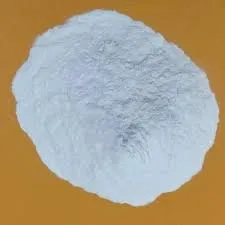
ઓગસ્ટ . 11, 2024 23:34 Back to list
Exploring the Relationship Between HPMC Viscosity and Its Impact on Formulation Performance in Pharmaceuticals
Understanding HPMC Viscosity and Its Applications
Hydroxypropyl methylcellulose (HPMC) is a widely used polymer in various industries due to its unique properties, one of the most critical being viscosity. Viscosity is a measure of a fluid's resistance to flow, and in the case of HPMC, it plays a vital role in determining its effectiveness in different applications, particularly in pharmaceuticals, construction, and food industries.
Understanding HPMC Viscosity and Its Applications
In pharmaceuticals, HPMC is extensively used as a binder in tablet formulations, as well as a thickening agent in liquid medications. The viscosity of HPMC affects the dissolution rate of the active pharmaceutical ingredients (APIs), which in turn influences the bioavailability of the medication. Higher viscosity grades of HPMC can slow down the release of the drug, providing a controlled release mechanism that can enhance therapeutic efficacy while minimizing side effects. This property is particularly important in the development of sustained-release and extended-release formulations.
hpmc viscosity

In the construction industry, HPMC is used as an additive in cement-based applications such as tile adhesives, mortars, and plasters. Its viscosity plays a crucial role in improving workability, adhesion, and water retention. By altering the viscosity of the mixture, construction professionals can ensure that the materials remain workable for longer periods, allowing for better application and reduced wastage. Additionally, HPMC helps to prevent segregation in cementitious mixtures, ensuring a uniform product that is essential for structural integrity.
The food industry also benefits significantly from the properties of HPMC, where it is employed as a thickening agent, emulsifier, and stabilizer in various food products. The viscosity of HPMC influences the texture and mouthfeel of food items, enhancing their overall sensory appeal. For example, in sauces and dressings, HPMC can create a desirable thickness without adding calories, making it a popular choice among health-conscious consumers. Furthermore, its ability to form stable emulsions allows for improved consistency in products like mayonnaise and ice creams.
Another notable aspect of HPMC is its non-toxic nature and compatibility with a range of substances, making it suitable for diverse applications. Its viscosity can be adjusted to specific needs, allowing formulators to tailor products for a variety of end-uses. This versatility has led to the increasing popularity of HPMC in various sectors, often replacing traditional thickeners and binders that may have limitations in terms of performance or safety.
In conclusion, HPMC viscosity is a fundamental property that influences its functionality across multiple industries. By facilitating controlled release in pharmaceuticals, enhancing workability in construction, and improving texture in food products, HPMC demonstrates its remarkable versatility and effectiveness as a polymer. As research and development continue to advance, the potential applications of HPMC will likely expand, making it an essential component in innovative formulations and solutions across diverse fields. Understanding and manipulating its viscosity can empower industries to create products that meet the evolving demands of consumers, while maintaining quality and performance.
-
The Widespread Application of Redispersible Powder in Construction and Building Materials
NewsMay.16,2025
-
The Widespread Application of Hpmc in the Detergent Industry
NewsMay.16,2025
-
The Main Applications of Hydroxyethyl Cellulose in Paints and Coatings
NewsMay.16,2025
-
Mortar Bonding Agent: the Key to Enhancing the Adhesion Between New and Old Mortar Layers and Between Mortar and Different Substrates
NewsMay.16,2025
-
HPMC: Application as a thickener and excipient
NewsMay.16,2025
-
Hec Cellulose Cellulose: Multi functional dispersants and high-efficiency thickeners
NewsMay.16,2025







